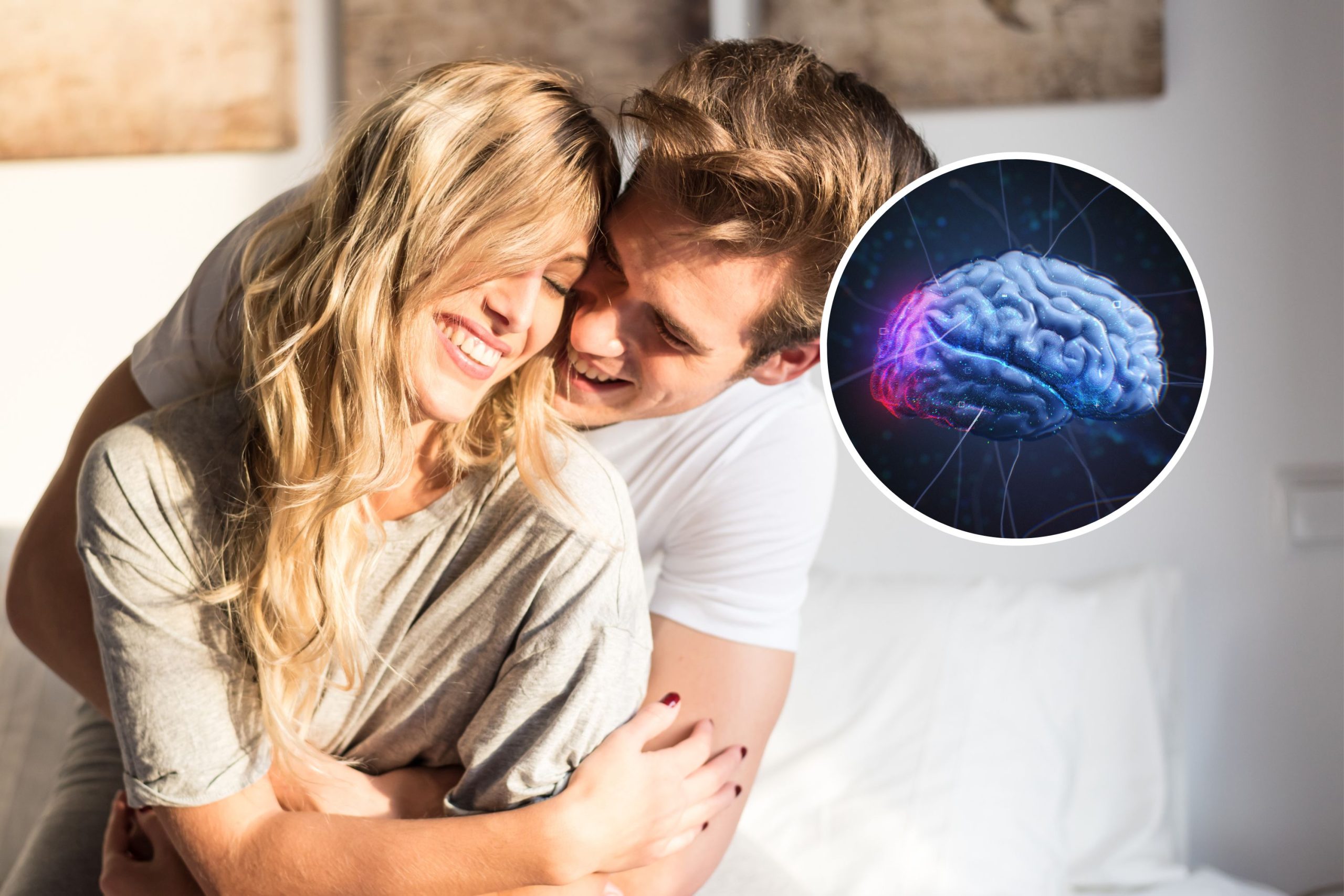Love might feel like it comes from the heart, but scientists have figured out where love lives inside the brain.
Researchers used functional magnetic resonance imaging (fMRI) to measure brain activity while people thought about various types of love, finding that the brain lit up in different areas, according to a new paper in the journal Cerebral Cortex.
They discovered that love in different types of relationships results in brain activity of different strengths, but all activated more or less the same brain areas.
ISTOCK / GETTY IMAGES PLUS
“We now provide a more comprehensive picture of the brain activity associated with different types of love than previous research,” study co-author Pärttyli Rinne, a philosopher and researcher at Aalto University in Finland, said in a statement. “The activation pattern of love is generated in social situations in the basal ganglia, the midline of the forehead, the precuneus and the temporoparietal junction at the sides of the back of the head.”
Love comes in many forms, from parental love for children to romantic love, friendship love, and even love of animals or nature.
The researchers describe how they measured brain activity in people who had just heard a description of a type of love, such as: “You see your newborn child for the first time. The baby is soft, healthy and hearty — your life’s greatest wonder. You feel love for the little one.”
They found that the love of a parent generated the most powerful brain activity, followed by romantic love. While the intensity of the brain activity varied between types, they all mostly lit up in the same region of the brain, with some exceptions.
“In parental love, there was activation deep in the brain’s reward system in the striatum area while imagining love, and this was not seen for any other kind of love,” said Rinne.
They also tested the brain activity associated with friendships, pets, nature, and strangers. The researchers found that love of nature lit up the brain’s reward system and not the areas associated with social cognition, while love of people lit up the social areas instead.
Interestingly, the researchers discovered that brain waves when spoken to about animals actually revealed if the person had a pet or not.
“When looking at love for pets and the brain activity associated with it, brain areas associated with sociality statistically reveal whether or not the person is a pet owner. When it comes to the pet owners, these areas are more activated than with non-pet owners,” said Rinne.
Understanding the physiology of love may seem cold, however, the scientists hope that their research could be used to better treat attachment disorders, depression or relationship issues.
Do you have a tip on a science story that Newsweek should be covering? Do you have a question about reservoirs? Let us know via science@newsweek.com.
References
Rinne, P., Lahnakoski, J., Saarimäki, H., Tavast, M., Sams, M., & Henriksson, L. (2024). Six types of loves differentially recruit reward and social cognition brain areas. Cerebral Cortex, 34(8). https://doi.org/10.1093/cercor/bhae331
